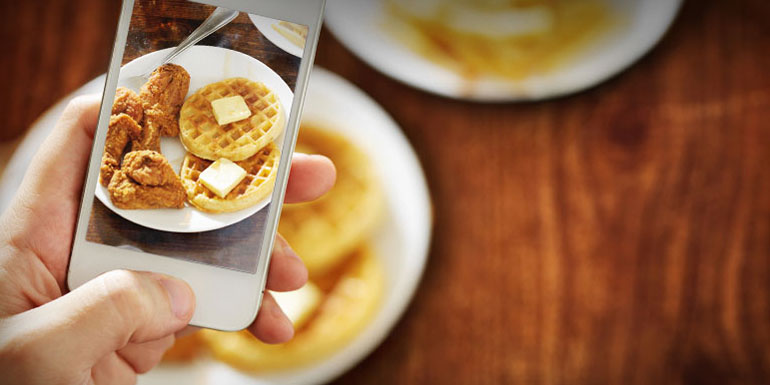
How Digital Platforms Influence Dining Choices
Reach customers where they are: on mobile and social platforms

Foodservice providers can learn much about their customers by taking a look at the ways in which they use digital platforms such as mobile devices and social media networks to influence decisions and experiences related to dining. The recent Coca-Cola Foodservice Insights webinar "The Consumer Digital Journey in Foodservice" revealed findings that looked at consumer behaviors before, during and after their visits to quick-serve restaurants (QSR) and full-serve restaurants (FSR).
Highlights included:
- Before their visits, consumers leverage digital networks to review restaurant websites for menus, choices, prices and hours of operation; read reviews; and search for coupons. They also engage in social networking.
- During their visits, consumers visit restaurant websites to look for offers and nutritional information. They look for things to do after they finish their meals, and they engage in social networking.
- After their visits, they use social networking to share their experiences and look for loyalty clubs.
Different Users Have Different Priorities
FSR and QSR customers use digital platforms for different reasons.
- FSR customers search online for restaurant information, check out menus and coupons, and sometimes preorder meals via the Internet. They also leverage their favorite social sites while they're eating or right after. They rely heavily on review websites and deals to guide their restaurant decisions.
- QSR customers often decide where to go last minute, within an hour or less of eating; search websites, apps and deals; and they leverage their preferred social sites for dining information. They use social media to find information first, and then look for deals and the restaurant's app.
According to Coca-Cola's Digital Guest Research 2014, about 21% of customers polled look at restaurant websites; 12% look at emails with offers and coupons from restaurants; and about 13% leverage sites like Facebook and Twitter for restaurant recommendations. Restaurant loyalty clubs, restaurant reservation sites and review sites also help customers decide where to go.
The Dining Experience Is More than Food
After their visits, customers tend to talk about their dining experiences on social platforms. This opens up opportunities for restaurants to keep the conversation going with offers, suggestions on post-meal activities or invitations to share their experiences online.
The researchers found that FSR customers are looking for a value-add for their engagement, which can be in the form of coupons, daily deals, loyalty program offers or restaurant apps. They also want mobile-enabled ordering and mobile loyalty programs.
The takeaway: Full-service restaurants have the opportunity to attract and retain customers by offering mobile payments, social rewards, deals and restaurant information.
QSR customers want the same types of value-add as FSR customers, but they want speed and agility in the form of a single app that tracks loyalty and enables ordering, according to the data.
The takeaway: Quick-service restaurants have the opportunity to attract and retain customers through social networking, mobile apps that enable payments, coupons and loyalty club programs.
The Bottom Line for Operators
The key message for foodservice providers is that digital communication must be incorporated into operations in order to generate demand, support the guest experience and build customer loyalty. As more and more customers rely on offers, coupons, user reviews and positive social commentary to guide where their dining dollars go, businesses that don't leverage digital platforms are missing out on marketshare and revenue.